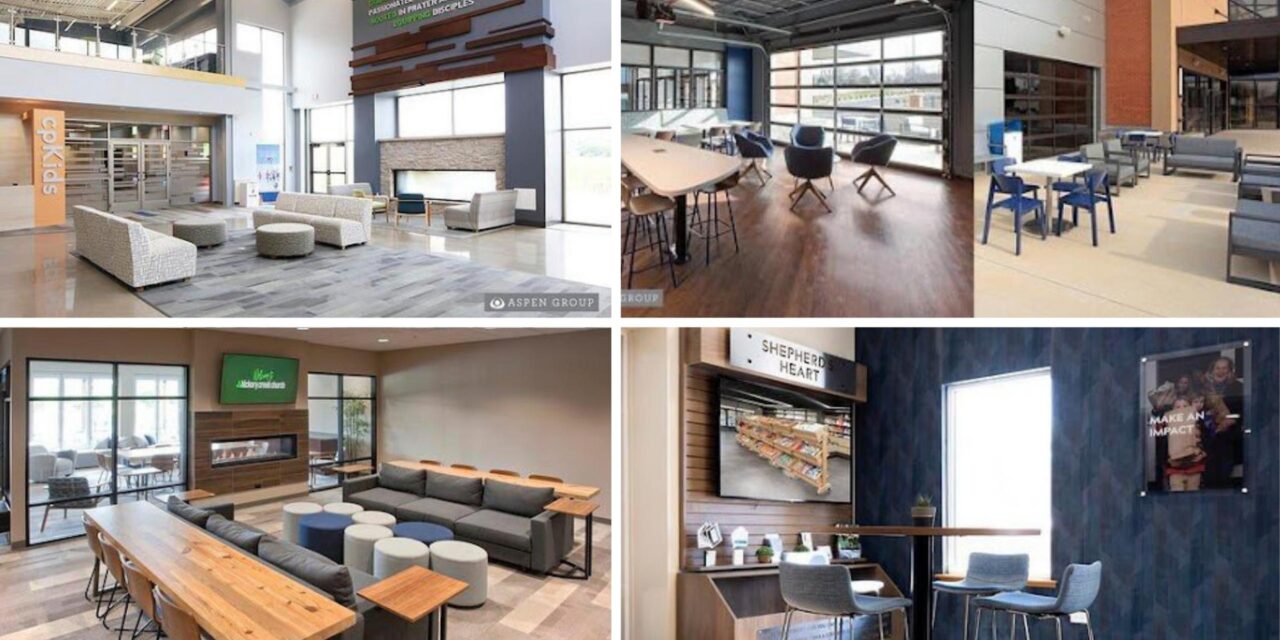Building a Church with Facilities that Say, “Welcome!” | By Greg Snider
People find community in many places — at work, in a book club, in a neighborhood group, or by joining a gym — all fantastic ways to connect and build relationships with others.
Our church lobbies play a critical role in building true community by giving people a space to encounter God together.
Engaging in a church experience is about developing a deep relationship with God and fostering meaningful relationships with others.
Designing for Radical Hospitality
These days, relationships aren’t necessarily being built in spaces people have to seek out, like Fellowship Halls. They’re happening when a person first walks through the front door of your church.
Because connecting with others is a vital part of the discipleship journey, hospitality needs to be one of every church’s highest priorities.
We’re serving a broken and hurting world — people want to sense immediately that they’re welcome and that they belong. It’s not just about staff and volunteers greeting people, but more of a complete shift to the entire congregation modeling hospitality.
A lobby’s number one job is to make people feel welcome and to build relationships. It goes beyond greeters. It’s about building a culture of radical hospitality that permeates the entire congregation.
Four Zones for Hospitality and Generosity
1. The Welcome Desk
Churches that have a welcome desk smack-dab in the entryway, are unintentionally creating a barrier to people when they walk in the door. It might seem like a logical idea — giving people a place to stop to get information or ask a question — but it actually works against the natural flow of the space and doesn’t offer people a place to stop and connect first.

Moving the welcome desk back and creating casual groupings of furniture, like the above example from Chapelstreet Church’s North Aurora, Illinois campus, lets people know they’re welcome and that there’s a space for them. It also allows them to navigate the space at their pace, and it invites them to relax and build relationships.
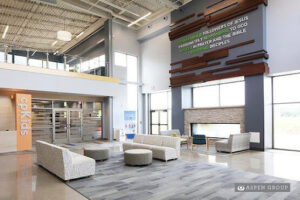
Chapel Pointe, in Hudsonville, Michigan (above), added a two-story focal point fireplace, giving the space warmth and expressing their unique DNA. Soft seating surrounding it, encourages people to linger in the space.
2. The Café
Church cafés aren’t necessarily drawing people in from the community like we had hoped — they’ve become a space for the people in the church, so it’s an important tool to build hospitality.
Relationships are built around food and drink, so we need to do whatever we can do to lower those barriers so people can authentically connect.
Consider reinventing your café to not just serve food and drink, but good food and drink — and not just serve good food and drink, but be served by people who have been trained to love people well and draw them into relationship.
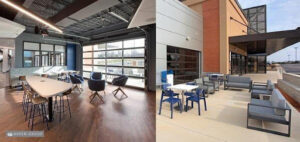
3. The Family Room
Family Rooms have become a unique way to add relational space with a more subdued atmosphere. These rooms, which are typically located right off the lobby, can offer a variety of seating, be outfitted with technology, and serve many purposes. They can be encased in glass, include a warming fireplace, or a connection to an outdoor patio.
These spaces are perfect for a quiet chat, or as worship overflow or for those who feel less at ease in a larger worship venue. They can even be used for small group meetings and gatherings.
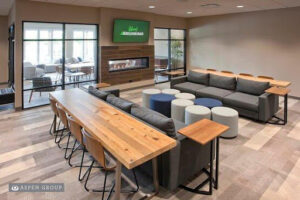
Hickory Creek Church, in Frankfort, Illinois (above), created a versatile fireside room, which connects to an indoor-outdoor space, offering more options and opportunities for connection and relationship building.
4. Generosity Zones
Many churches are considering alternatives for tithing — opting not to pass an offering plate in a service. So, what are some good ways to bring the concept of generosity front and center into the lobby and reinforce giving to the congregation and the neighboring community?
During nicer weather, you could coordinate a drive-through food pantry for your community right at your front door. Modeling generosity in this way communicates to your congregation, neighbors, and the larger community that you’re a church of radical generosity.
Another option is to create drop boxes for donations located at highly visible and convenient locations in your lobby, where food or clothing donations could be made.
Tithing kiosks could also be conveniently located at key spots in the lobby. These units give people a non-threatening way to donate, especially making it easy for newcomers and first-time givers.
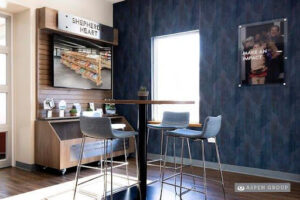
Chapelstreet Church, in North Aurora, Illinois, (above) intentionally added a drop box for their Shepherd's Heart Care Center in a visible location in their cafe. Now, when visitors and the congregation use the space, they're able to learn about the food pantry ministry, have a convenient place to donate, and get motivated to get involved.
Action centers are a great way to remind people of ongoing ministry opportunities and to give them a place to take their faith a step further.
Making these zones front and center brings importance to the concept of generosity, and lets everyone know they can be a part of building a culture of giving.
Do you want more ideas on how to build a culture of hospitality and generosity at your church? Don’t forget to tap the people in your church for ideas. Your own congregation understands your church’s mission and vision and are most likely waiting for the opportunity to share their thoughts with you.
To learn more about Greg Snider and the Aspen Group, click here.

